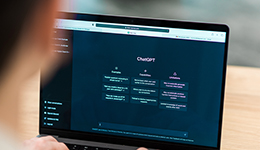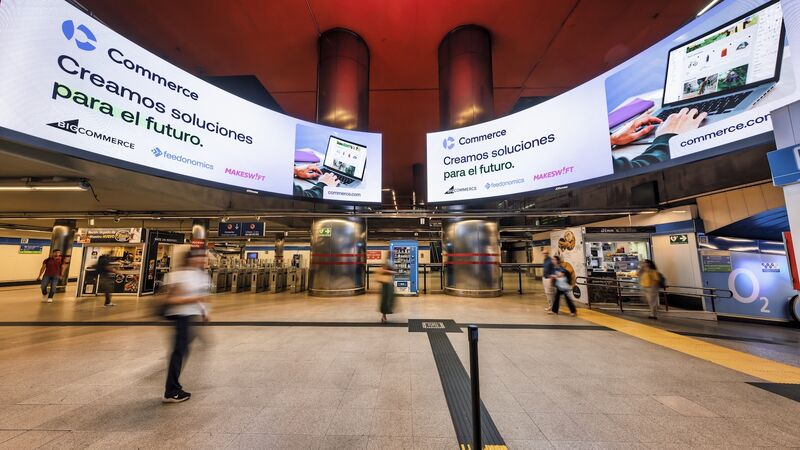
The COVID-19 pandemic is a global crisis without modern parallel. It is bigger than Bird Flu, SARS CoV, the dot.com bubble and the 2008 financial crash. The situation is further complicated by the lack of a global precedent of this magnitude – one which has been so broad in impact across geographic, demographic, and economic sectors – and explains why many public and private sector organisations were already becoming strained before COVID-19 went truly global. It is the most disruptive black swan event we have ever experienced, and there is no textbook response.
BJSS believes that the global economy will now have to navigate three distinct phases – the immediate ‘Recovery’ period, the mid-term ‘Regroup’ phase and final ‘Renew’ phase. We will all have to progress through these phases before we can declare a full recovery, but how long will each last?
Recover – Dealing with the current situation and managing crisis and continuity plans
Regroup – Organisations learn and emerge stronger
Renew – Preparing for and organising for the “next normal”
The priority for all businesses over the past weeks has naturally been almost exclusively on how to respond during the initial Recover phase. However, organisations and their leaders must consider all three phases, and allocate the appropriate level of oversight and resources to each. This is easier said than done.
Our position is that while assessing and getting the response right is always the first step in managing a crisis, it is never too soon to apply learning and begin planning for the aftermath.
The complexity and chaos caused by COVID-19 suggests that the Recovery phase will require unprecedented levels of resources, planning and coordination during a challenging, and potentially protracted, period. Planning for this recovery now – even as the crisis continues to unfold – is key.
At BJSS, the actions that we are taking now are setting the foundation for our future – we’re confident that we and our client partners can achieve sustained growth and performance after the pandemic is over.
I’ve outlined some of the steps we have taken since the crisis emerged in the hope that they might be helpful to other organisations. These are only guidelines, but they are here as an aid to industry leaders as you think through your response for your companies.
BJSS’ Recover Priorities
Protect your people. Business as usual is not an option. Start by drawing up and executing a plan to support employees that is consistent with the most conservative guidelines appropriate to your business. Within this, you also need to plan for the trigger points of expected – and unexpected – policy changes.
Our approach has centred on providing clear, simple communications to our people on how to deal with COVID-19 (consistent with WHO, Government, and other health-agency guidelines) while empowering them to deal with any rapidly evolving situation they encounter.
This autonomy is supported by two-way communications channels that provide a safe space for employees to share issues and concerns, and help monitor the effectiveness of updated policies.
Set up a company-wide response team. Nominate a team to lead the effort. They can organise colleagues from every function and discipline to assist. In most cases, some of these team members will need to step out of their day-to-day roles and dedicate most of their time to virus response.
In response to COVID–19, we spun out several workstreams which will also be common for most companies:
- Employees’ health, welfare, and ability to perform their roles
- Financial stress-testing and development of a contingency plan
- COVID-19 monitoring, response, and long-term planning
- Marketing and sales responses to demand shocks
- Coordination and communication with partners and clients
These teams define our specific goals on a rolling 48-hour period and adjust continually, balancing our immediate needs against the company’s agreed-on planning scenarios. We’ve rapidly implemented simple operating cadences and internal discipline with a focus and bias towards to action, output and decisions. Any meeting which doesn’t achieve these is dropped from the calendar.
Forecasting, cash flows and headroom. The importance of this can’t be over stressed enough – it is a topic which all businesses should be taking seriously. We have defined several scenarios tailored to our industry and context. Anything which is impacting, or has the potential to impact, our revenue and cost base, has been assessed, and is continually reviewed.
We have modelled our financials (cash flow, P&L, balance sheet) in each scenario, enabling us to identify triggers that might significantly impact our position. For each trigger, we have sought to define moves to stabilise the organisation in each scenario to ensure we can continue to protect our employees, clients and bottom line.
Areas we think should be reviewed include:
- Reforecast trading and cash flows. Test and challenge all assumptions. Ensure trading and cash flow forecasts are integrated. Model a downside scenario to understand actual and potential needs.
- Review cash flow forecasts. Some businesses’ cash flows are already being devastated as revenue dries up. Review in detail cash flows for the next three months and identify what mitigating actions can be taken to preserve cash in the short/medium term.
- Review your lending documents. Understand the key terms, covenants, baskets of headroom and flexibility in your banking and finance documents.
- Remain in contact with key stakeholders. Businesses should communicate regularly with key stakeholders including their lenders and investors in order to retain their confidence and support.
- Seek out additional sources of capital early. Should cash flow forecasts suggest that liquidity is or will become an issue, assess options for raising funds.
Stay close to your customers.
Companies that navigate disruptions well often succeed because they invest in their core customers and anticipate their needs and behaviours.
To support this, we have significantly increased the volume of client contact across all our industries. Not to drive sales, but to understand if, how and where we can support. This could be deploying a team to help address unprecedented demand, or proactively sharing innovative, tech-enabled solutions which solve new problems.
We also found that there is a clear need to revisit pricing and customer contracts. None of the sectors in which we operate are being spared pricing disruption—some of it long term— during the crisis. We must respond appropriately. Understanding how to do this, and how to engage and position these conversations with clients, has been a large part of our initial response.
Pricing and commercial terms should be carefully considered. Businesses and consumers will not take kindly to suppliers who are seen to be taking advantage of their position as markets recover. The decisions you make now can set a good or bad precedent for future customer and supplier interactions.
We’re planning carefully and where possible, collaboratively.
Monitor the green shoots.
We think he nature of this economic shock means that the usual economic indicators may not be the most relevant. We’re now tracking several additional indicators to provide the clearest picture of the Recover phase timing, and the most likely progression back to a normal economic environment:
- Hours worked. This will plunge as economies weaken and containment efforts are applied. Accordingly, a rebound would signal people getting back to work.
- Job creation. The unemployment rate is a lagging indicator so is of secondary importance to hours worked, but job creation would be a sign of improvement.
- Unemployment claims. Initial claims for unemployment benefits are a telling indicator of current conditions. It will rise in the near term but should decline quickly when the economic tide turns.
- Manufacturing activity. Manufacturing shipments are currently being depressed by the global manufacturing slump and weakness in global supply chains. A rise in shipments is a signal of commerce reviving.
- Retail sales. Retail sales will also be a good signal of the economic tide, indicating when consumers have increased confidence.
- House sales. House sales and listings will also be a good indicator of recovery. Buyers are likely to jump into the market the moment conditions start to stabilise.
- Equity market indexes (e.g., DOW, FTSE, DAX, Nikkei, Hang Seng). In terms of financial indicators, equity markets tend to be a leading indicator, as they embody expectations of future profits – they will also rebound before many economic data series improve.
The global economy is tightly integrated, but it is important to note that the Recover phase will start at different times and vary by geography, industry or culture. There will only be a full recovery once normal operations, from producers and manufacturers to services and consumers, are able to resume normal life.
Monitoring these indicators provides the market intelligence and corresponding financial indicators to help us make informed, rational and balanced decisions for the good of our company and our people. We recommend you do the same.
Demonstrate what’s important.
Businesses are only as strong as their values and the people and communities they serve. Your people and your customers will expect you be true to your values. For example, if like many businesses, you claim to value your people, demonstrating that by how you support them through this crisis and being authentic will position you well for the recovery.









